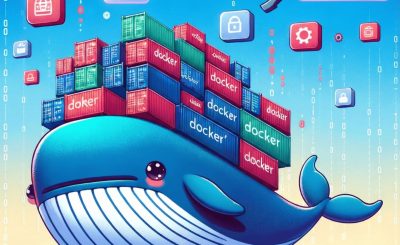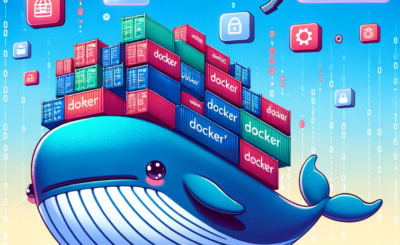Table of Contents
Introduction
In the world of containerization, Podman is gaining popularity as a daemonless alternative to Docker, especially for developers who prioritize security and flexibility. Paired with Podman Compose, it allows users to manage multi-container applications using the familiar syntax of docker-compose without the need for a root daemon. This guide will cover everything you need to know about Podman Compose, from installation and basic commands to advanced use cases.
Whether you’re a beginner or an experienced developer, this article will help you navigate the use of Podman Compose effectively for container orchestration.
What is Podman Compose?
Podman Compose is a command-line tool that functions similarly to Docker Compose. It allows you to define, manage, and run multi-container applications using a YAML configuration file. Like Docker Compose, Podman Compose reads the configuration from a docker-compose.yml file and translates it into Podman commands.
Podman differs from Docker in that it runs containers as non-root users by default, improving security and flexibility, especially in multi-user environments. Podman Compose extends this capability, enabling you to orchestrate container services in a more secure environment.
Key Features of Podman Compose
- Rootless operation: Containers can be managed without root privileges.
- Docker Compose compatibility: It supports most
docker-compose.ymlconfigurations. - Security: No daemon is required, so it’s less vulnerable to attacks compared to Docker.
- Swappable backends: Podman can work with other container backends if necessary.
How to Install Podman Compose
Before using Podman Compose, you need to install both Podman and Podman Compose. Here’s how to install them on major Linux distributions.
Installing Podman on Linux
Podman is available in the official repositories of most Linux distributions. You can install it using the following commands depending on your Linux distribution.
On Fedora:
sudo dnf install podman -yOn Ubuntu/Debian:
sudo apt update
sudo apt install podman -y
Installing Podman Compose
Once Podman is installed, you can install Podman Compose using Python’s package manager pip.
pip3 install podman-compose
To verify the installation:
podman-compose --version
You should see the version number, confirming that Podman Compose is installed correctly.
Basic Usage of Podman Compose
Now that you have Podman Compose installed, let’s walk through some basic usage. The structure and workflow are similar to Docker Compose, which makes it easy to get started if you’re familiar with Docker.
Step 1: Create a docker-compose.yml File
The docker-compose.yml file defines the services, networks, and volumes required for your application. Here’s a simple example with two services: a web service and a database service.
version: '3'
services:
web:
image: nginx:alpine
ports:
- "8080:80"
db:
image: postgres:alpine
environment:
POSTGRES_USER: user
POSTGRES_PASSWORD: password
Step 2: Running the Containers
To bring up the containers defined in your docker-compose.yml file, use the following command:
podman-compose up
This command will start the web and db containers.
Step 3: Stopping the Containers
To stop the running containers, you can use:
podman-compose down
This stops and removes all the containers associated with the configuration.
Advanced Examples and Usage of Podman Compose
Podman Compose can handle more complex configurations. Below are some advanced examples for managing multi-container applications.
Example 1: Adding Networks
You can define custom networks in your docker-compose.yml file. This allows containers to communicate in isolated networks.
version: '3'
services:
app:
image: myapp:latest
networks:
- backend
db:
image: mysql:latest
networks:
- backend
- frontend
networks:
frontend:
backend:
In this example, the db service communicates with both the frontend and backend networks, while app only connects to the backend.
Example 2: Using Volumes for Persistence
To keep your data persistent across container restarts, you can define volumes in the docker-compose.yml file.
version: '3'
services:
db:
image: postgres:alpine
volumes:
- db_data:/var/lib/postgresql/data
volumes:
db_data:
This ensures that even if the container is stopped or removed, the data will remain intact.
Example 3: Running Podman Compose in a Rootless Mode
One of the major benefits of Podman is its rootless operation, which enhances security. Podman Compose inherits this functionality, allowing you to run your containers as a non-root user.
podman-compose --rootless up
This command ensures that your containers run in a rootless mode, offering better security and isolation in multi-user environments.
Common Issues and Troubleshooting
Even though Podman Compose is designed to be user-friendly, you might encounter some issues during setup and execution. Below are some common issues and their solutions.
Issue 1: Unsupported Commands
Since Podman is not Docker, some docker-compose.yml features may not work out of the box. Always refer to Podman documentation to ensure compatibility.
Issue 2: Network Connectivity Issues
In some cases, containers may not communicate correctly due to networking configurations. Ensure that you are using the correct networks in your configuration file.
Issue 3: Volume Mounting Errors
Errors related to volume mounting can occur due to improper paths or permissions. Ensure that the correct directory permissions are set, especially in rootless mode.
FAQ: Frequently Asked Questions about Podman Compose
1. Is Podman Compose a drop-in replacement for Docker Compose?
Yes, Podman Compose works similarly to Docker Compose and can often serve as a drop-in replacement for managing containers using a docker-compose.yml file.
2. How do I ensure my Podman containers are running in rootless mode?
Simply install Podman Compose as a regular user, and run commands without sudo. Podman automatically detects rootless environments.
3. Can I use Docker Compose with Podman?
While Podman Compose is the preferred tool, you can use Docker Compose with Podman by setting environment variables to redirect commands. However, Podman Compose is specifically optimized for Podman and offers a more seamless experience.
4. Does Podman Compose support Docker Swarm?
No, Podman Compose does not support Docker Swarm or Kubernetes out of the box. For orchestration beyond simple container management, consider using Podman with Kubernetes or OpenShift.
5. Is Podman Compose slower than Docker Compose?
No, Podman Compose is optimized for performance, and in some cases, can be faster than Docker Compose due to its daemonless architecture.

Conclusion
Podman Compose is a powerful tool for orchestrating containers, offering a more secure, rootless alternative to Docker Compose. Whether you’re working on a simple project or managing complex microservices, Podman Compose provides the flexibility and functionality you need without compromising on security.
By following this guide, you can start using Podman Compose to deploy your multi-container applications with ease, while ensuring compatibility with most docker-compose.yml configurations.
For more information, check out the official Podman documentation or explore other resources like Podman’s GitHub repository. Thank you for reading the DevopsRoles page!

